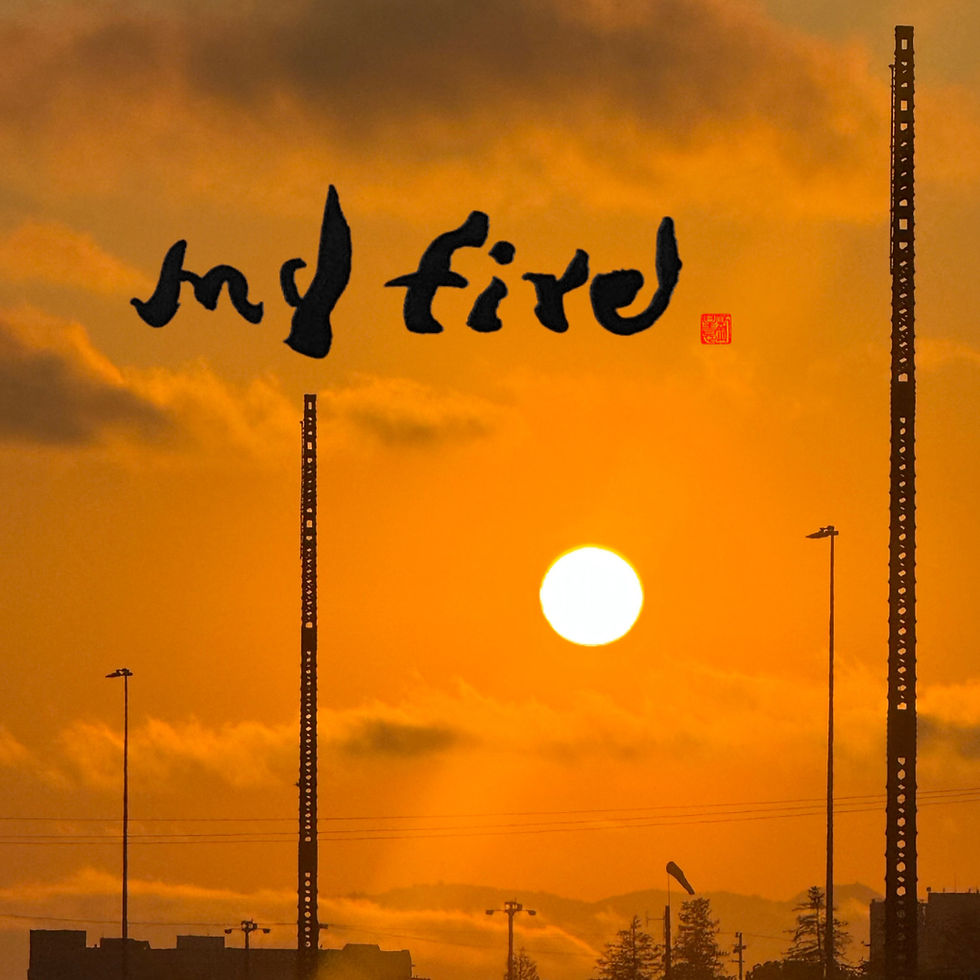The Bay Bridge
- Ryuall

- Nov 26, 2024
- 4 min read
Updated: Feb 26
How the Bay Bridge Unites the People of the Bay Area

When most people think about San Francisco, they think of the iconic Golden Gate Bridge. Few are aware that the shorter Golden Gate Bridge actually connects many fewer people to the city than its sister bridge on the east side of San Francisco—the San Francisco-Oakland Bay Bridge (often referred to as simply the Bay Bridge).
For the millions who live and work in the Bay Area, the Bay Bridge is far more than a critical piece of infrastructure. Spanning the waters of the San Francisco Bay, this iconic bridge is a connective tissue that links cities, cultures, and communities in ways that go beyond the practical need for a roadway. Whether you're heading to work or enjoying a breathtaking sunset, the Bay Bridge serves as a daily reminder of the bonds that tie this vibrant metropolitan area together.
A Physical Symbol of Cultural Connection
At its core, the Bay Bridge is a workhorse of regional transportation. Built in the 1930s and rebuilt after the 1989 Loma Prieta earthquake, the 4.5-mile (7.2-km) bridge is an essential conduit for commuters who rely on it daily to travel between the cities of San Francisco and Oakland—and beyond. Every day, about 260,000 people by car, bus, bike, and foot use the bridge.
The bridge also plays a pivotal role in regional trade and commerce. The Port of Oakland, one of the busiest in the country, is directly connected to the city of San Francisco via the bridge. This allows goods to flow smoothly between the region’s major economic engines, facilitating the exchange of products, services, and people across a broad network of industries—from technology to manufacturing to international shipping.
But it’s not just the people who are connected by the bridge; it connects the city to many more distant places—Berkeley, Walnut Creek, Vallejo and beyond. Many people even commute from exurbs in the Central Valley 60-75 miles (96.6-120.7 km) away. The geography of the Bay Area might seem sprawling, but the Bay Bridge has made it cohesive and navigable, allowing for a cross-pollination of ideas, cultures, and industries that shape the region.
A Spiritual Gateway to the Bay Area’s Heartbeat
For many, crossing the Bay Bridge is more than a commute. It’s a moment of reflection, a pause between worlds. The act of crossing the bridge symbolizes the transition from one state of mind to another—from work to home, from a busy city to the calmer suburbs. There’s something almost spiritual about the experience, particularly when the fog rolls in, enveloping the bridge in a mist that turns it into a thing of mystery and beauty. One can find themselves caught in a calming trance as they take in the rhythmic sound of their wheels hitting the bumpy plate connectors.
The Bay Bridge also symbolizes the magic of human resilience. After the original bridge was damaged in the 1989 Loma Prieta Earthquake, it was rebuilt with increased safety and strength—becoming a testament to the region’s ability to recover and rebuild, even in the face of devastation. In this way, the Bay Bridge has come to symbolize the perseverance of the Bay Area people. It stands as a reminder that even in difficult times, we can rebuild, reconnect, and move forward together.

Culturally Embedded in the Fabric of the Bay Area
The Bay Bridge has become a cultural icon of the Bay Area, often seen in film, art, and photography as an emblem of the region’s unique character. Its distinct design—particularly the "Skyway" portion, which curves elegantly over the Bay—has captured the imagination of artists and photographers for decades. It has been featured in films like The Pursuit of Happyness (2006) starring Will Smith, and San Andreas (2015), a film about a massive earthquake that hits California. However, The Towering Inferno (1974) remains one of the most notable early uses of the bridge in disaster filmmaking, helping to cement its place as a cinematic landmark in the American consciousness.
From the indigenous Ohlone people who first lived in the region to the waves of immigrants who have called the Bay Area home, the bridge embodies the diversity that defines the region. San Francisco and Oakland are home to an array of ethnic communities, each contributing to the region’s rich cultural landscape. Oakland itself is one of the most diverse cities in the world! The bridge allows these communities to access each other’s neighborhoods, businesses, and events, encouraging interaction and mutual respect.
The Bay Bridge is also a cultural stage. Each year, it hosts public art installations like the "Bay Lights," a light sculpture that adorns the bridge’s western span, transforming it into a shimmering work of art visible from miles away. These installations, along with the countless festivals, performances, and events held in both cities, reflect the spirit of collaboration and creativity that permeates the region.
More Than Just a Bridge: A Beacon of Connection
In the end, the San Francisco-Oakland Bay Bridge is more than just a practical roadway. It is a cultural and spiritual icon, a physical structure that serves as both a literal and symbolic connection between communities across the Bay Area. It is a testament to the resilience, diversity, and creativity of the people who live here. Whether you’re commuting to work, gazing at the bridge from a nearby vantage point, or crossing it on your way to see loved ones, the Bay Bridge is a constant reminder of the connections that make this region so special.
In a world that often feels divided, the Bay Bridge stands as a monument to what we can accomplish when we come together—no matter the distance, the differences, or the challenges. The San Francisco Bay Bridge, after all, is more than just a physical structure spanning the bay; it’s a connection, a lifeline, and a testament to the resilience of the people it serves.




Comments